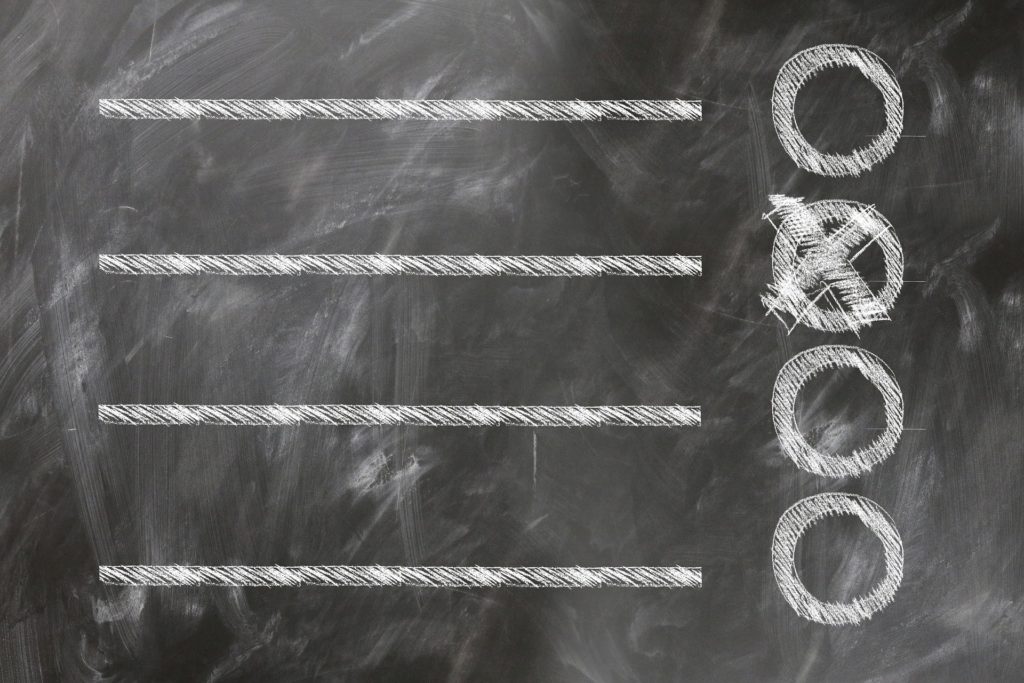I always ask myself:
“Why do hard things when I could do easy things?”
“Why do boring things when I could do fun things?”
Can you relate? If you have ever found yourself suddenly cleaning your desk when it’s time to start a new work task or suddenly found yourself watching two episodes of Veep when you should be heading to the gym, then you know what I mean.
Procrastination is a skill that I consider myself proficient in and a habit that is deeply engrained at this point.
Which is why I love this idea so much.
I like to use procrastination to save money, I like to call it Purchase Procrastination.
Purchase Procrastination
The theory here is that instead of saying “No” to myself when I want something, I instead write it down, wait a certain amount of time and then give myself permission to buy it.
Here’s how to do it:
1. Start a list of things that you would like to buy. I keep mine on a sticky note in my day planner.
2. Decide on a time frame that you will wait before buying (some wait 72 hours hence the alternative name; the 72 hour rule). I usually leave items on the list for a long time (weeks/months).
3. Buy it when the cooling off period is over, if you still want it. Of course it does still need to fit into the budget but as long as it I have the money for it, I allow myself to buy it.
One note here though, I should probably say that this list isn’t a bucket list. It doesn’t have “Tesla Model X” written on it, for example. I put all of the small and medium items I want on this list, especially those small items that tend to wrack up and wreck up a budget. For example, I had “Pizza cutter” on my list for months. We had a pizza cutter that worked, that we just didn’t like that I wanted to replace. Keeping the small stuff on the list helps reinforce the idea that no purchase is above the law.
I use this Purchase Procrastination strategy all the time, during “No Spend” challenges and during regular day-to-day life.
Here’s why I love Purchase Procrastination
1. Minimizes impulse spending. This is basically the opposite of impulse spending and it is really so helpful for controlling those impulses.
2. Minimizes buyer’s remorse. Putting some time between the want and the buy helps give me time to consider if it is truly something I want or if it was just shiny object syndrome, from which I also suffer. Sometimes I discover that it was simply the excitement of a new X or a new Y that I was entranced by, not the item itself. I’ve purchased a lot of things I regret (like a wood carving kit that’s been in my closet for 8 years) that I should have considered more closely.
3. Sales! I’ve had items go on sale while waiting and then paid less! (Disclaimer: It also may be sold out when you return to buy the item. If so, then it just wasn’t meant to be.)
4. Mind changing. I’m blown away by how often I decide a few days later that I don’t want the item anymore! Sometimes I move on to being excited about something else like I mentioned in the buyer’s remorse point, but sometimes I straight up just don’t want it anymore. Just recently I was thinking about getting a smart home device like an Amazon Echo. After I did a bit more research decided that I don’t really think it would be that valuable to me. Money saved!
5. You might get it as a gift instead. If your SO asks you what you want for Christmas/birthday, you already know what you want/need. Instead of the dreaded “I don’t know” answer, I give out a couple of items from my purchase procrastination list and now he doesn’t have to stress out trying to come up with an idea and I get something that I have really been wanting. Win Win!
6. Pairs well with “thrift first” strategy. Waiting to buy something gives you time to look for used versions. I’ve found better cheaper options on Craigslist or at garage sales and thrift shops. If I can’t find a used one, then I’ll buy a new one after the waiting period.
7. Gives you time to find alternatives. Like I mentioned above, I had “pizza cutter” on my list for a long time (ours was wobbly). Then I heard you can use kitchen shears to cut pizza instead. We tried it, loved it, erased pizza cutter. Boom! Savings!
8. Better budgeting. If you wait until the next month, you can include it in the next budget, making both months more accurate.
9. Happiness. Delayed gratification tends to make us happier since we build up anticipation for the item and then tend to feel more sustained happiness. It also helps build self-control which helps us to achieve all other goals and leads to feeling more fulfilled.
Finally being a procrastinator comes in handy! Yes that’s right, finally we can get some benefit from this attribute that has caused us so many headaches and stress in the past.
So don’t procrastinate starting your purchase procrastination!
Do you use some form of procrastination in your money saving strategy?


Pingback: I hate saying no to myself | Use purchase procrastination instead – FinanceRox